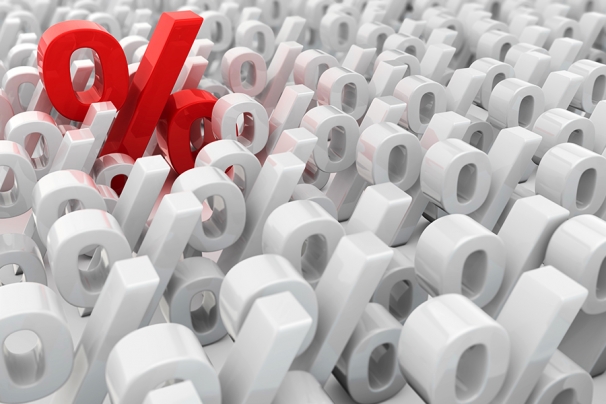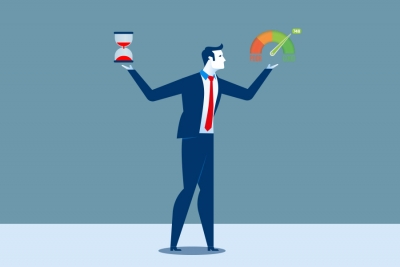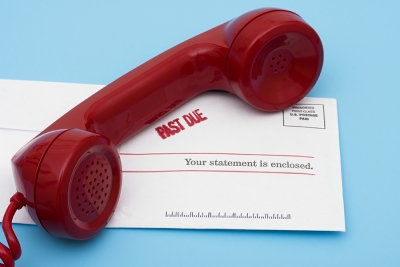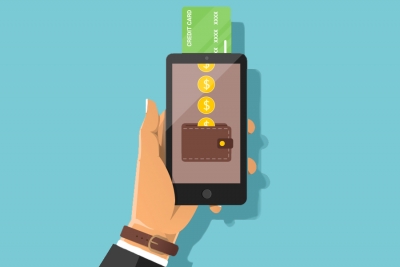Credit card debt is massive in America and continues to grow.
Research has indicated that by the end of 2017 new credit card debt will reach $60 billion.
We will owe $1 trillion overall.
How do people fall into credit card debt so easily?
Well, a lot of credit cards start with 0% interest rate, then quickly increase to 25%.
This is a significant addition to a simple purchase.
Credit card interest is the primary way in which credit card issuers make their money.
When you make a purchase, the bank pays the payee and then charges the cardholder interest during the borrowing period.
Before deciding what interest rate to offer, banks will check national and international (if relevant) credit bureau reports.
This will identify the card holder’s borrowing history with other banks.
How Much of a Difference Does Interest Make?
It’s hard to comprehend exactly just how much of a difference interest can make.
So let’s break it down.
Say you have $5,000 in credit card debt.
A 18% interest rate will mean you’re paying back more than $2,900 in interest on that debt.
A 13% interest rate will mean you’re paying back $1,800 in interest on that debt.
And a 10% interest rate will mean you’re paying back $1,200 in interest on that debt.
As you can see, a 8% difference in rates will mean the difference of $1,700!
With some credit cards having an interest rate as high as 25%, it’s not hard to see how someone can dig themselves a big hole.
Terms and Conditions
Being familiar with the terms and conditions is important.
Check the agreement copy you received when you opened the account.
The agreement will state when the interest rate will change to the prime rate.
Usually, the higher price will come into play at the start of the new billing cycle after the prime rate increases.
The Bank of America’s World Elite Mastercard’s rate will increase on the first day of the billing phase that starts in the same month in which the index is published.
The margin and the index make up a variable rate.
The margin is the unchanging part of the price and it makes up the bulk of what you will pay in interest.
The card issuer governs it.
The index is the fluctuating part of the rate.
It is the prime rate calculated by and published in the Wall St Journal.
When the margin rate is 10%, and the index is the prime rate of 3.25% your total interest rate will be 13.25%.
When the prime increases by a quarter point, the rate will rise to 13.5%.
How to Contend with Rising Rates
The best way of combating rising rates is to keep a zero balance.
Pay off your credit card monthly.
This will eliminate concern over interest rates, and you will get free use of the money until the due date.
There is a period in your billing phase when you can make purchases without being charged interest.
It starts on the first day of the statement phase and ends on the payment due date.
This is a bonus if you use your credit card to get bonuses or a short-term cash flow.
If you purchase on day 1, you would have 55 days to pay it off before you have to pay interest.
A purchase made on the second day would get 54 days interest-free.
A purchase made on day 30 would mean you had 25 interest-free days.
If you are in a lot of debt, this is not always possible, and you will need to negotiate with the card issuer.
You can ask for a review of the interest rates.
Contact the card issuer to see if they can reduce the interest rate or give you a fixed rate.
You will have a better chance if you have a reliable payment record.
When negotiating with the card issuer:
- Emphasize the length of time you have been with the financial institution.
- Refer to other accounts.
- Summarize the history of on-time payments.
- Research deals with different cards and shows them to your credit card company. Check if they will match the rate.
It is also important to be aware of your utilization ratio.
This is the amount of revolving credit you are presently using divided by the total amount of free revolving credit.
Basically, the amount you owe divided by the credit limit.
Let’s say you have 2 credit cards.
Together, the credit limit is $10,000.
You have a balance of $5,000 on one of the cards.
This means your credit utilization ratio is 50%.
Do you have a high-interest rate that makes it impossible or difficult to make your payments?
Request a new payment plan that is suitable for your budget.
However, a longer payoff interval may mean you will pay more in total interest charges.
A survey conducted by Princeton Survey Research Associates International in 2016 determined that all you have to do is ask.
A represented sample of 1495 adults were contacted.
Of these 981 had a major credit card.
9 out of ten (89%) who requested that their late fee was waived were granted the request.
More than 3 out of 4 (78%) who asked for an interest rate reduction were successful.
A recent survey in 2017 showed similar results.
According to the survey results, everyone should be asking for these benefits.
The survey found that only a small number of credit card users, about 1 in 5, had made each kind of request.
These days it’s a lot more expensive to procure a customer than it is to keep one.
The credit card provider will do what they can to retain one.
Transfer Your Balance
Utilizing a credit card balance transfer can be an efficient way to pay off debt quicker and save hundreds of dollars on interest (even after paying a balance transfer fee on the new card).
Let’s say you have a $3,500 balance on a card with a 17% Annual Percentage Rate, and you are not paying any more than the minimum $95 due each month.
At this rate and if you have stopped using the card, it will take 53 months to pay it off.
Adding the interest will mean you will pay almost $5,000.
If you can get a card with an 18 month 0% APR on transfers, you’d have to pay about $195 a month to pay off the balance before the promotional APR expires.
That is only $100 more than your present minimum payment.
You would pay the balance off faster and save hundreds on interest payments.
You can also merge multiple balances on one card.
This will simplify your finances.
Is a Balance Transfer the Right Move for You?
If you are in a good financial place (e.g., your credit card balances are modest and not maxed out, you have a good credit score and a stable job) transferring a high APR balance to save money and pay it off faster makes sense.
However, if most of your credit cards are maxed out, or your credit score has been adversely affected by late payments, you should consider other options.
The reasons for this are:
- You will need a good credit score to get a balance transfer credit card. That rules out most people who are in a lot of debt or have made late payments recently.
- If you are in a lot of debt a balance transfer could make it worse. Balance transfers provide immediate relief from high-interest rates. However, they give you more credit that you will use when you need it.
After You Get the New Rate
You need to pay on time as late payments will result in an interest rate hike again.
Maintain a credit utilization ratio of under 35%.
If you are maxing out your credit limit it will decrease your credit score, and in turn increase your interest rate again.
You are Protected Under the Law
The Credit Card Accountability Responsibility and Disclosure Act (CARD) of 2009 is a federal-based law.
It essentially changed consumer rights and credit card issuers’ practices.
Restricted Interest Rate Increases – increases on existing balances are only permitted under certain conditions:
- The cardholder makes a late payment
- When a promotion rate finishes
- There is an adjustable rate
Credit card providers can only increase interest rates on new operations after the first twelve months.
The card issuer is required to give 45 days notice before significant changes come into effect.
Restricted Universal Default – credit card providers can no longer raise interest on existing credit card balances based on a customer’s payment accounts with other distinct credit issuers (other creditors and utility businesses).
If at least 45 days notice is given universal default can still be used on potential credit card amounts.
Credit card issuers can raise interest on future card purchases, and there is no limit to how high-interest rates can go.
If credit card accounts are founded on variable APRs (as most are), when the prime rate goes up, interest can increase.
Research has indicated that most Americans get into massive credit card debt.
The interest charged by credit card providers accounts for a significant proportion of this debt.
Many credit card holders are not negotiating with their banks to get better terms.
Try bargaining, and if this is not successful, you can apply for a credit card balance transfer and get an interest free period to allow you to pay off your debt.
Essentially you aim to make monthly payments and work towards a zero balance.









Leave A Comment